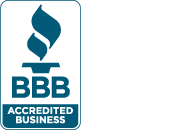| Many nonprofit organizations are 501(c)(3)s, or pending to become one. This is because under the Title 26, Section 501(c) of the United States Internal Revenue Code, certain nonprofits are exempt from paying some federal taxes. Nonprofits and churches with exemption may also more easily apply for grants. Though not all funders require it of nonprofits–proof of good work will suffice–most require proof of 501c3 status. |
| Below is a list of the various types of 501 c organizations along with a brief description of the specific purpose of each. |
| • 501(c)(1) — Corporations Organized Under Act of Congress (including Federal Credit Unions) |
| • 501(c)(2) — Title Holding Corporation for Exempt Organization |
| • 501(c)(3) — Religious, Educational, Charitable, Scientific, Literary, Testing for Public Safety, to Foster National or International Amateur Sports Competition, or Prevention of Cruelty to Children or Animals Organizations |
| • 501(c)(4) — Civic Leagues, Social Welfare Organizations, and Local Associations of Employees |
| • 501(c)(5) — Labor, Agricultural, and Horticultural Organizations |
| • 501(c)(6) — Business Leagues, Chambers of Commerce, Real Estate Boards, etc. |
| • 501(c)(7) — Social and Recreational Clubs |
| • 501(c)(8) — Fraternal Beneficiary Societies and Associations |
| • 501(c)(9) — Voluntary Employees Beneficiary Associations |
| • 501(c)(10) — Domestic Fraternal Societies and Associations |
| • 501(c)(11) — Teachers’ Retirement Fund Associations |
| • 501(c)(12) — Benevolent Life Insurance Associations, Mutual Ditch or Irrigation Companies, Mutual or Cooperative Telephone Companies, etc. |
| • 501(c)(13) — Cemetery Companies |
| • 501(c)(14) — State-Chartered Credit Unions, Mutual Reserve Funds |
| • 501(c)(15) — Mutual Insurance Companies or Associations |
| • 501(c)(16) — Cooperative Organizations to Finance Crop Operations |
| • 501(c)(17) — Supplemental Unemployment Benefit Trusts |
| • 501(c)(18) — Employee Funded Pension Trust (created before June 25, 1959) |
| • 501(c)(19) — Post or Organization of Past or Present Members of the Armed Forces |
| • 501(c)(21) — Black lung Benefit Trusts |
| • 501(c)(22) — Withdrawal Liability Payment Fund |
| • 501(c)(23) — Veterans Organization (created before 1880) |
| • 501(c)(25) — Title Holding Corporations or Trusts with Multiple Parents |
| • 501(c)(26) — State-Sponsored Organization Providing Health Coverage for High-Risk Individuals |
| • 501(c)(27) — State-Sponsored Workers’ Compensation Reinsurance Organization |
| • 501(c)(28) — National Railroad Retirement Investment Trust |
| There are 26 different types, with a common type being a 501(c)(3). C3’s not only save organizations money but make them more appealing to donators as it means they have been reviewed and approved by the IRS as a nonprofit. All donations to certified nonprofits may also be written off as a tax deduction, which appeals to businesses looking to help nonprofits. |
| There are 501(c)(1) – 501(c)(28), minus a 20 and 24. Most nonprofits are 501(c)(3)’s, and these organizations are considered religious, education, charitable, or scientific in purpose. The second most common are 501(c)(4)’s: they are nonprofits that may lobby for legislation and take part in elections, as long as campaigning is not that organization’s primary purpose. These donations are not tax deductible, nor are the organizations required to disclose their donors publicly. Since 501(c)(4) are often lobbying, this stipulation has become controversial. |
| Some sections, like the 501(c)(20) and 501(c)(24), were combined or scrapped. Learning about the rules and stipulations that come with the 501 you are interested in is critical before applying. |
| For more information regarding the 501(c)(3) application process, please visit our web page or Contact Us at 877-857-9002. |


